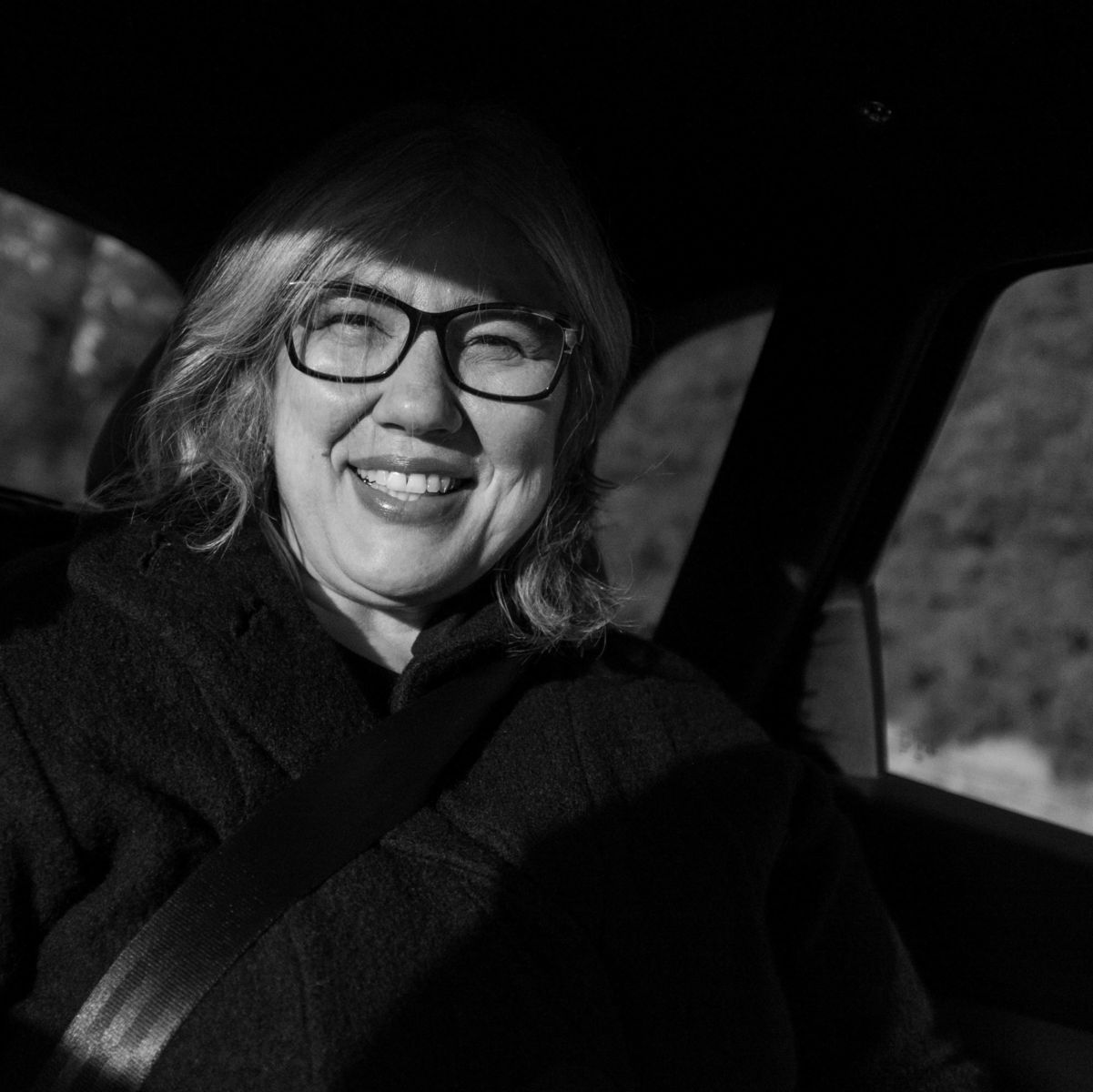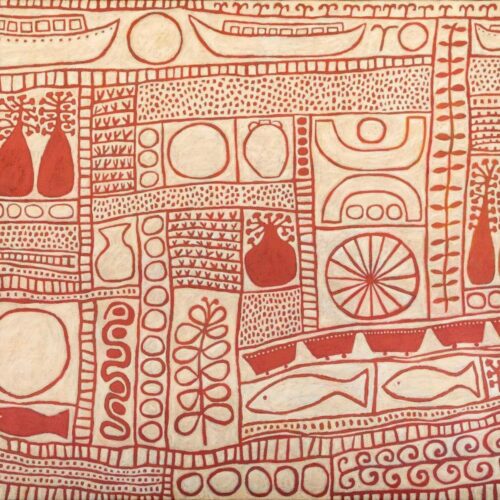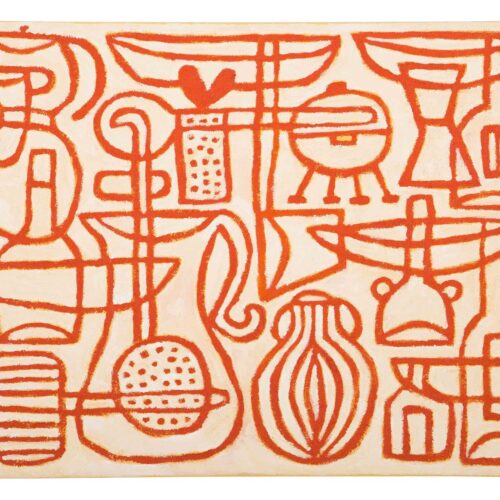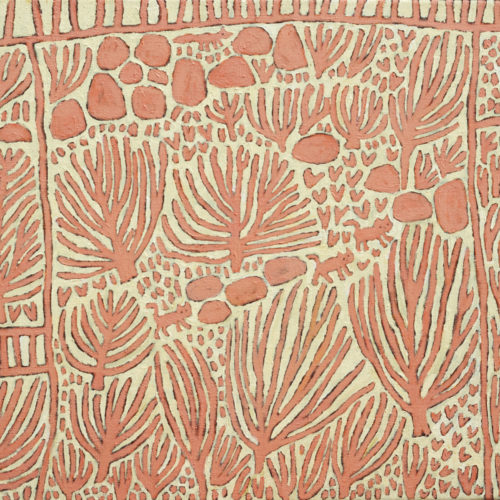Marina Strocchi
Marina Strocchi graduated with a Bachelor of Art from Swinburne University, Melbourne, in the early 1980s. She worked as a graphic designer and photographer during that decade, travelling abroad for extended visits to Florence, Paris, Mexico and in 1990, India. In the mid-to-late 1980s, she was engaged as a community arts worker and screen printer of banners and posters, eventually setting up her own small design and textile printing business.
Strocchi was closely associated with the Roar Studio (Fitzroy) group of Melbourne Neo-Expressionist painters and shared their aesthetic allegiance to the CoBrA group, art brut, primitive art and contemporary Australian Indigenous art – in particular the Papunya Tula Artists’ painting movement. With founding member Wayne Eager Strocchi went on to establish the Ikuntji Art Centre at Haasts Bluff (1992) in Central Australia, convening the first combined Haasts Bluff/Kintore women’s painting workshops in the Desert in 1994. In 1999, she was a Field Officer for Papunya Tula Artists Pty Ltd. Between 2000 and 2003, as tutor and lecturer in Art and Craft at Batchelor Institute in Alice Springs, she delivered painting workshops to Indigenous artists at Titjikala, Amata and Yuendumu, and later at Wingellina and Kalka.
Marina Strocchi has participated in numerous group exhibitions since 1990 and has now held over 30 solo exhibitions in the USA, Melbourne, Adelaide, Brisbane, Sydney, Canberra, Darwin and Alice Springs since 1998. Her work is represented in major public and corporate collections nationally including the National Gallery of Australia and Artbank. She has been the recipient of several awards and prizes and was a finalist in the 2010 Wynne Prize.
In 2015 a major survey exhibition took place in Alice Springs with an accompanying book Marina Strocchi- A Survey 1992-2014, with over 100 colour plates and essays by Sasha Grishin, Sioux Garside and Georges Petitjean.
"My work is an intuitive response to nature and the central Australian desert where I have lived since 1992. I attempt to activate the feeling of being in the landscape, deconstructing and anthropomorphizing the landscape, challenging the human-centered viewpoint of nature whilst referencing restorative care and reparative action. Through layering textured marks, I create the irregularities and patterns of a world where nature is the major stakeholder. The tension between the interdependent line work and form creates the counterpoint for the structure and colour in my paintings. I try to create a form of ‘spacial’ harmony: a place of refuge, as nature does. A fundamental aspect of my work is responding to the brilliant glare of the Australian light and its effect on land formations." - Strocchi
[photo credit:Sandra Wong Geroux]







